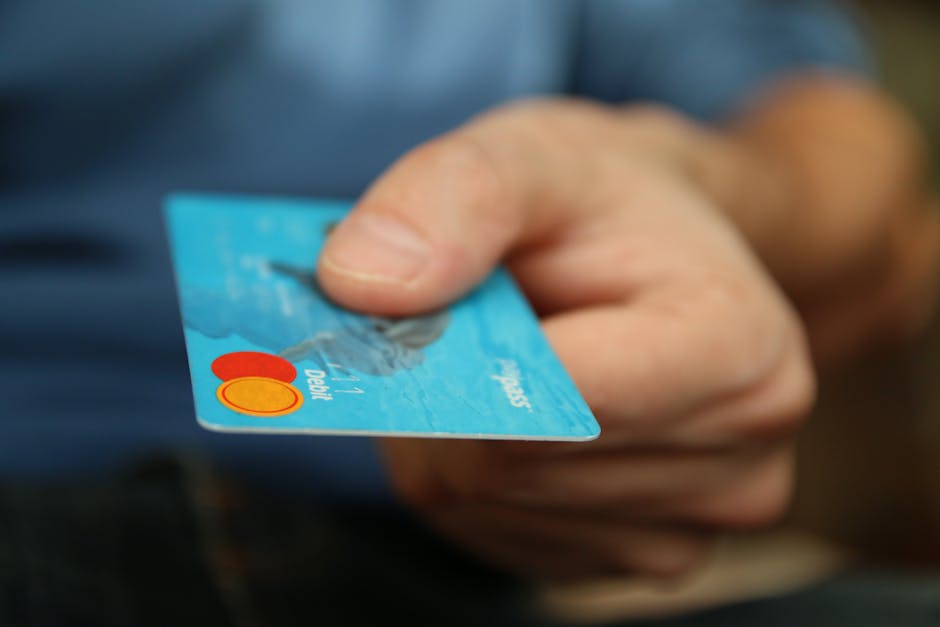How Can You Create and Stick to a Debt Repayment Plan?
If you’re in debt, it’s important to come up with a repayment plan. A plan can help you stay on track to meet your goal of becoming debt-free. With a little discipline and organization, you can easily create and stick to a debt repayment plan.
Steps for Creating a Repayment Plan
- Create a list of all your debts. Gather all your creditors, the amounts owed, interest rates and minimum payments. Once you have all the information, you can assess and prioritize the debts so it’s easier to create your repayment plan.
- Set a goal. Determine how much you want to pay down each month and choose a timeline for when you’d like to be debt-free. Allocating a reasonable amount that’s achievable within your given timeline is important. Also, if possible, try to include additional payments if you can to help you reach your goal.
- Choose a repayment strategy. The two most common strategies are the avalanche and snowball methods. The avalanche method requires you to pay off the debts with the highest interest rates first, while the snowball strategy involves paying off the smallest debts first and then working up to the larger ones. Whichever strategy you choose, stick with it and make sure to update your list of debts and payments regularly.
- Set up a payment schedule. Once you’ve chosen a strategy, create a repayment plan by allocating payments to each of your debts. Scheduling automatic payments is one way to ensure you don’t miss a payment and remain committed to achieving your goal.
- Adjust and monitor. Monitor your progress frequently and adjust your repayment plan if needed. If you come up with extra funds, use it towards additional payments. If you close out a debt, you can use the freed up funds to pay down your other debts. Alternatively, if you encounter a situation where you’re unable to make payments on time (e.g., job loss or illness) adjust your repayment plan accordingly, speak with your creditors, and look for ways to get back on track.
Staying Committed to Your Plan
Creating a repayment plan is the first and most important step. Staying committed and not losing sight of your financial goals will help you succeed in becoming debt-free. To stay on track:
- Create a budget. Assessing your current spending and setting a budget is critical in helping you manage and pay down your debt. A budget can help you decide where you can cut back on spending and allocate more money to debt payments.
- Reassess your plan. Reevaluate your plan often and adjust your payments accordingly. Revisiting your financial situation and plan frequently will help keep you on track and remain committed to your goal of becoming debt-free.
- Be consistent. Making consistent payments each month and paying more than the minimum balance whenever possible helps you save on interest over time. The more you can pay, the sooner you’ll reach your goal.
- Celebrate small successes. Achieving debt-free status will take some time. Celebrating the small successes along the way, such as paying off smaller debts and reducing the amount owed on larger debts, will help you stay motivated.
Next Steps
Now that you have a better understanding of creating and sticking to a debt repayment plan, you can take the following next steps to start tackling your debt:
- Create a budget and list out all your creditors
- Choose an approach for tackling your debt (avalanche or snowball method)
- Allocate an amount to each debt repayment and set up a payment schedule
- Continue to monitor and adjust your payment plan as needed
Resources
For more information on eliminating your debt and understanding the repayment process, here are some helpful resources:
- How to Pay Off Debt: A Step-by-Step Guide – NerdWallet
- The Formula for Repaying Credit Card Debt – The Balance
- Debt Repayment Strategies – Dave Ramsey
- Eliminating Debt – NFCC
- 5 Strategies to Pay Off Debt Quickly – Debt.com
- Make a Plan: 6 Ways You Can Reduce Debt and Start Saving – Forbes

What types of debt are good to pay off first?
The types of debt that should be paid off first are typically high-interest debt such as credit cards and loans with higher interest rates. Paying off this type of debt first can help you save money in the long run as you won’t be paying as much interest in the future. Additionally, it can help free up more of your income for other important financial goals like saving for retirement.
What is the best way to pay off debt?
The best way to pay off debt depends on your specific situation and financial goals. Generally, the quickest and most efficient way to pay off debt is to develop a budget and prioritize paying off high interest debts first, while paying the minimum balance on other debts. You may also want to consider negotiating for lower interest rates or consolidating the debt into a single loan.
Ultimately, the best way to pay off debt is to develop a plan that works best for your budget and personal goals.
It’s also important to have an emergency fund set up in order to cover unexpected expenses without taking on more debt. With a combination of consistent payments, budgeting and future planning, you can be debt-free in no time.
What should I do if I can’t afford to pay off my debts?
If you cannot afford to pay off your debts, the first step should be to contact your creditors and explain your financial situation. You may be able to negotiate a reduced payment plan, or an alternative arrangement to help you manage your debts more effectively. You may also want to consider speaking to a free debt advisory service. They can help you understand your options and provide tailored advice on how to solve your debt problem. Finally, if you don’t want to take any action yourself, you could contact a debt relief company to help you get out of debt. These companies will negotiate with creditors to find a solution that works for you.
What options are available for debt relief?
1. Debt Management Plan: A debt management plan is an informal, negotiated agreement between you and your creditors. Under this plan, creditors may agree to lower your interest rates, waive late fees, and/or extend repayment periods.
2. Debt Consolidation: Debt consolidation involves combining all your existing debts into a single loan with one monthly payment. It can be secured (backed by collateral) or unsecured, and usually comes with lower interest rates than unsecured debt.
3. Debt Settlement: Through a debt settlement, you offer a lump sum payment to creditors in exchange for an agreement to settle a portion of the debt. This usually results in a lower amount than the original balance.
4. Bankruptcy: Bankruptcy may be an option for those who are facing a large debt burden that is unmanageable. It involves liquidating (selling) some of your assets to pay off creditors and eliminating your remaining debt. It should be used as a last resort when other options are not available.
What are the advantages and disadvantages of debt relief programs?
Advantages:
1. Debt relief programs provide debtors with the opportunity to pay lower payments and reduce the amount of their financial obligation.
2. Debt relief can be a great help to those who are struggling with multiple debts, helping them get back to good standing with their creditors.
3. Debt relief can help a person improve their credit score, as settlements with creditors and negotiations often exhibit responsible money management on the debtor’s part.
4. Debt relief can also reduce the amount of interest a person pays over the course of their loan by requesting lower interest rates from their creditors.
Disadvantages:
1. People who use debt relief can experience negative implications on their credit score if their credit card companies report the debt to the credit bureaus as settled for less than the total balance.
2. Debts that have been settled still remain on a person’s credit report for seven years, which can negatively affect their credit score.
3. Debt relief programs can have high enrollment and administrative fees that should be taken into consideration.
4. Lastly, debt relief is not a guarantee of debt relief, as creditors can turn down a settlement offer or request more money than originally agreed upon.
What types of debt can be relieved through debt relief programs?
Debt relief programs can help people reduce and/or eliminate the following types of debts: credit card debt, medical bills, student loans, unsecured personal loans, payday loans, tax debt, and home loans. In some cases, bankruptcy may also be an option depending on the type of debt and the debtor’s unique circumstances. Debt relief programs can also help people consolidate their debt into one payment, helping to simplify the repayment process. With debt relief programs, the debtor can often negotiate lower payments and interest rates, making it easier to manage their debts and start the path to financial stability.
What qualifications do I need to be eligible for a debt relief program?
The qualifications for a debt relief program vary depending on the type of program you are applying for. Generally, you may need to demonstrate financial hardship and that your debt is unmanageable. You may also be required to show proof of income and make a budget. Credit counseling agencies typically have the best resources to help you determine if you are eligible for a debt relief program.
What kind of debt qualifies for debt relief programs?
Debt relief programs can provide assistance for a variety of types of debt, including credit card debt, medical debt, student loan debt, and personal loans. Some programs may also be able to help with other obligations, like utility bills and overdue rent payments. In addition, debt relief can be useful if you are struggling with a high amount of debt, especially if you have already exhausted other options for dealing with the debt.
